Building an MVP is a sure way of saving time and money when developing your app. It also allows you to get valuable user feedback, test your app’s features, and see how your audience accepts it.
Starting your own business sounds like a great idea, especially in the era of modern technologies, where you can easily reach your customers by building an MVP. Using the right digital tools, everything seems effortless now, from buying and selling online to accessing goods and services from your phone with the slide of your finger. As a result, every organization is hiring app developers to get a piece of the digital market and have an exclusive app that helps them build a trusting, long-lasting client base.
Startups, on their part, now have access to countless IT tools than ever before and capitalizing on the mobile application market is too good to pass up. However helpful and straightforward it is to use apps for everything, being behind the scenes of those everyday IT tools is a whole other thing. Whether you’re the developer behind them or the business owner who needs them, developing apps is no small undertaking. They aren’t cheap to build and maintain, and they take time and skills that you can’t just pull out of a hat. Enter the MVP.
See, an app can be a risky investment for a business if it’s not approached with care. And even with the utmost care, the most well-researched, expensive, extravagant app can fail and lead to disappointing user engagement. Fortunately, developers can help you safeguard your investment, lower your risks, and save you some big bucks with a Minimum Viable Product (MVP). Building an MVP is the best way of developing a low-risk and lower-cost product that you can escalate as you gather feedback. This feedback allows you to build with a purpose as you collect and break down market data. What’s not to love about that? If you can’t afford to gamble your budget on an app without knowing how your users will respond to it, then an MVP is your fail-safe entry into the mobile world.
So, before you start diving into expensive, unplanned app development, read this article to find out why you should consider launching a minimum viable product (MVP) instead.

What is an MVP?
When turning your idea into a tangible mobile product, you may be tempted to pack it with countless features and functionalities so that it can cater to every need of your users. I mean, the more, the better, right? While that may apply to other product types, apps don’t work like that. For mobile products, more features don’t equal higher value. An MVP is the perfect example of this. You can develop an initial version of your app that lacks all the bells and whistles but still focuses on the key features that offer value to your users.
As we already stated, MVP stands for Minimum Viable Product, and it is a strategically basic version of your app that only includes its fundamental components and features. An MVP will directly target the core needs of your end-user and have just the main requirements while leaving out any extra features. Building an MVP helps you save money, time and lower your risks. However, it also allows developers to simplify the development process and collect valuable feedback from users with the least effort. This last aspect is one of the reasons why building an MVP is so important.
You can spend months researching your market to death, you can follow best design and development practices, and you can spend millions on developing your app, but none of that will give you accurate, usable data. The best course of action is to test a tangible product in an actual market. You can release your MVP to a small group of targeted users and gather feedback, or you can launch it directly into the market. This way, you can try it on your real users to see if it solves the problems it’s supposed to and if it has the potential to succeed long-term.
Additionally, building an MVP is especially beneficial if your app offers something new or groundbreaking with little to no market. In this scenario, an MVP will surely help you test the waters and check if your idea is accepted and takes off before investing too much in it.
It’s important to note that building an MVP does NOT mean releasing an unplanned, ugly, and cheap nonfunctional mobile product. Instead, it means releasing a usable and lightweight app that solves your users’ problems while giving you the tools to make incremental updates and iterations to design and features, all based on honest user feedback. This way, building an MVP allows you to legitimize your idea within your market and expand from there as you learn. However, while you will probably have to make changes along the way, the core value proposition should stay the same.

Do You Need an MVP?
Studies show that 90% of startups fail. From this sky-high percentage, about 42% fail due to misreading market demand and 29% due to funding problems. Here’s where the MVP comes to save the day; by validating if the app satisfis users’ needs and if it gets traction. Now, we are not saying building an MVP is a sure way to success, but it will undoubtedly counterbalance some of the forces that can drag your startup into the void of these alarming statistics. This can be priceless to help you guarantee some success before you spend a whole lot of money on marketing.
See, when your first product is minimal and has just the right amount of features, you can initially save big money, which you can inject into other more pressing aspects of your business. When you release your MVP to the market, you can incrementally inject capital into your app, and your development team can implement iterations based on real-user feedback. This way, you can avoid misreading market demand and adapt to it on the go. You’ll also be more spry and responsive to the needs of your users, which will make them bond better with your product.
This process of adaptation provided by the MVP can also help your development team gauge if users are interested in the updates they’re giving through the app. As a result, they can remove or add the necessary features according to actual user requirements and needs instead of playing an expensive and useless guessing game. On that same note, building an MVP gives your development team the readiness to react quickly, anticipate, and adjust to your market’s circumstances and actions. This can be crucial to give your product a favorable advantage over your competitors.
We must add: theoretically, you don’t need an MVP to launch your app. You can go all-in from the get-go if you choose to. But remember: if you risk all your resources on building a mobile product and it fails, your losses will be infinitely more significant than if you were to ease into the market with an MVP.
What Are The Top Benefits of Building an MVP?
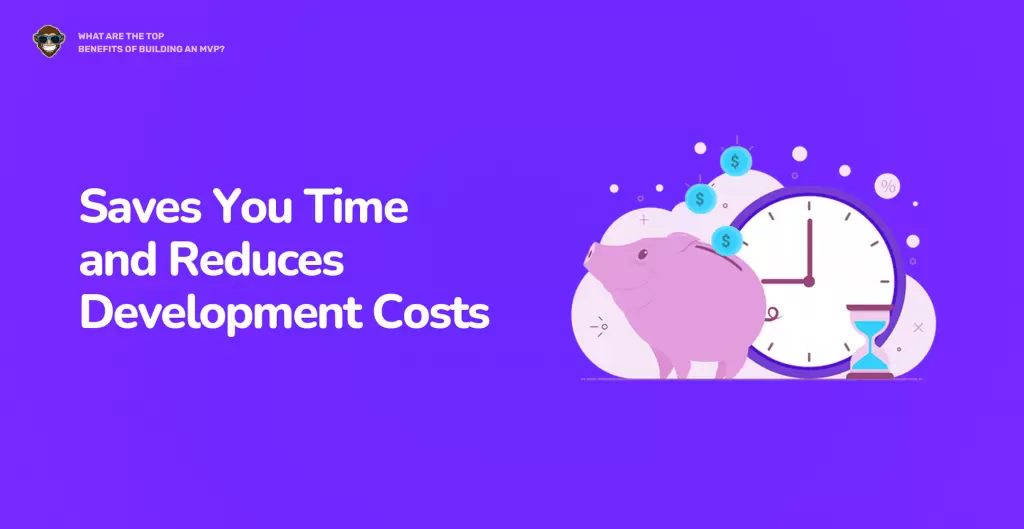
Saves You Time and Reduces Development Costs
As we already learned earlier, funding problems are one of the main reasons why startups fail. Making smart monetary decisions is crucial to ensure your startup will have a steady flow of cash. Here’s where building an MVP can be highly beneficial for your company. When you go all-in from the get-go and develop a sophisticated product, you’ll be waiting for too long before releasing your app, and you’ll likely risk spending well beyond your budget. Splurging money on something whose unpredictability is so high might not be a good idea, especially for startups who often have limited resources.
You see, a mobile product can take an average of 4 to 9 months to develop, depending on the complexity and structure of the app. This time frame is tied to varying development costs, but global data shows that most quality apps can start at $100,000 and can go as high as $1.000.000. Sure, you’ll get an outstanding final product that you can release to your market, but how much your app costs doesn’t guarantee acceptance. Just as with a low-cost app: either your users will like it or they won’t. If they like it, great, but if they don’t, the time and money you spent on developing it go right down the drain.
On the contrary, when you initially choose to build an MVP, you’ll likely be paying anywhere from $10,000 to $50,000, and your development team will not take more than 2 to 4 months building it. See the difference? Foregoing any unnecessary features and implementations will reduce your initial costs immensely and will shorten your time-to-market by more than 50%. This massive reduction in prices directly results from the speed at which innovative development teams, like ours at Foonkie, can build and release MVP products compared to full-featured applications.
Additionally, with an MVP, you’ll receive instant user feedback by using KPIs, analytics and store reviews. You’ll learn if your app targets the proper needs and solving the correct problems, and you can plan accordingly. This way, you’ll know the outcome of your app before spending too much on it, and you can make the necessary investments as you go, injecting capital only on the required features. This approach will significantly enhance the user experience, raise your app’s retention rates, and ultimately boost your startup’s growth.
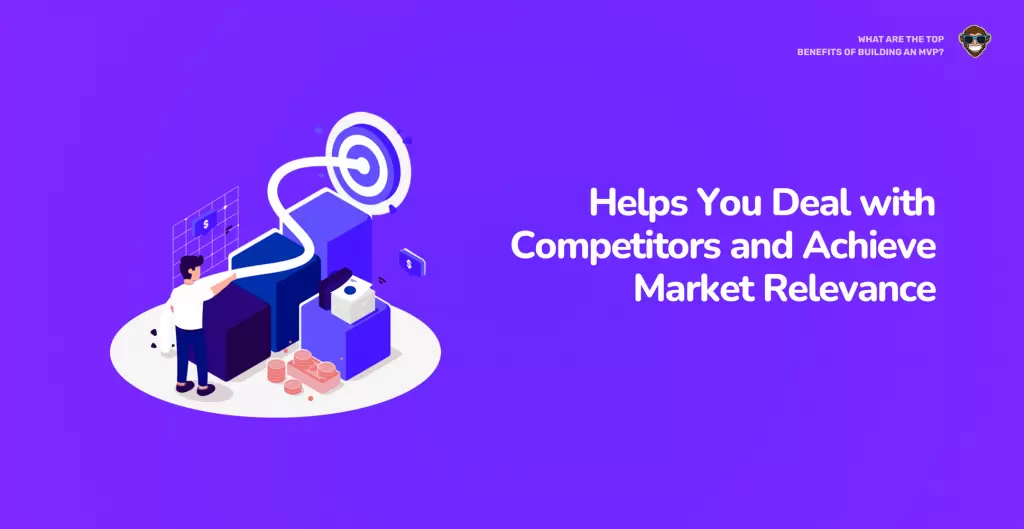
Helps You Deal with Competitors and Achieve Market Relevance
As you probably already know, the modern app market is very crowded. Coming up with a new idea for an app or developing an existing concept with an innovative approach is getting more complicated every day. There are currently 9 million different apps available in app stores worldwide; saying that the competition is fierce is an understatement. At this point, the market leaders are all set, but things are getting trickier for startups releasing their new apps. Users tend to download new apps out of curiosity, and if they don’t find any value in them, they delete and move on to the next. Hence, the importance of an MVP.
Building an MVP instead of a full-feature app will give you the chance to test your app before committing to anything too big and test the waters to see if your users respond. This benefit gives you a significant advantage over your competitors because you’re enriching your app according to the market’s demands. This way, you’re targeting specific needs, and you’re continuously building a more polished and valuable mobile product.
Also, because the growth of your product is gradual thanks to your MVP, your development team can use newer technologies as they become available. As a result, they can update your product by integrating emerging technologies and fresh features, thus helping your product stay relevant in the very competitive app market. Granted, your competitors may also use MVPs. Still, if your development team stays reactive, your app can easily stand out by delivering better and more unique features and value as your users’ demands increase.
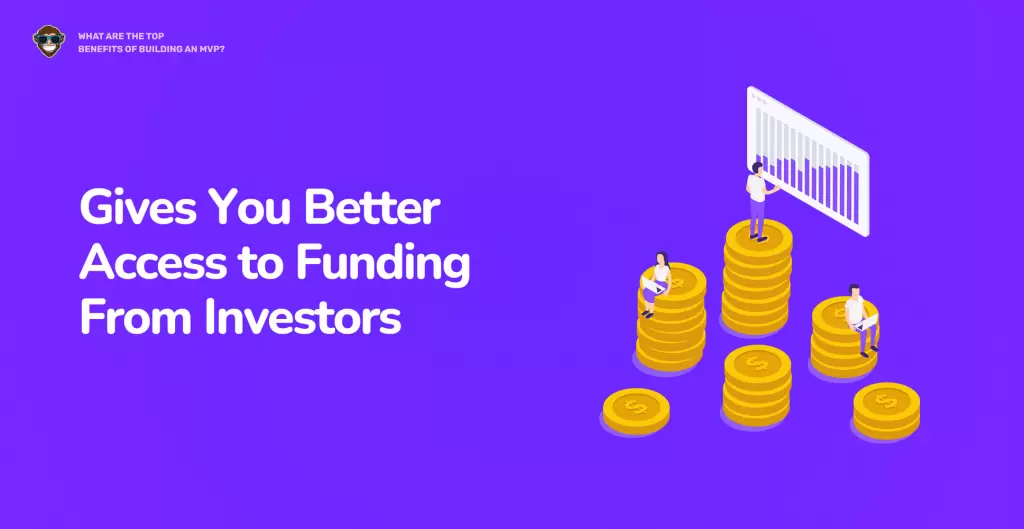
Gives You Better Access to Funding From Investors
Studies show that in 2021, one in four startups cannot receive the funding they need, limiting their growth and, in many cases, leads to failure. For this reason, you must avoid falling into that 25% and take all the necessary steps to prepare yourself when you’re ready to start looking for investors. One of the most useful, impressive, and informative tools to leverage investor buy-in is the MVP.
The key to receiving the funding you need is building confidence in your product and highlighting its value and ability to solve a real problem. Building an MVP is an effective method to get these points across because it materializes an abstract concept and allows your potential investors to see your idea live. It will also show them that you have a solid app based on actual market research that demonstrates the validity of your product.
Furthermore, since an MVP isn’t an abstract idea but a fully functioning product, you can show investors your app in action and provide them with a physical product they can see and use. This way, they’ll get solid evidence that you know what you’re doing instead of guessing and improvising. If they see you’ve already launched your app and have a decent user base, they’ll get encouraged because they can invest without having to wait several months to see the return of their investment.
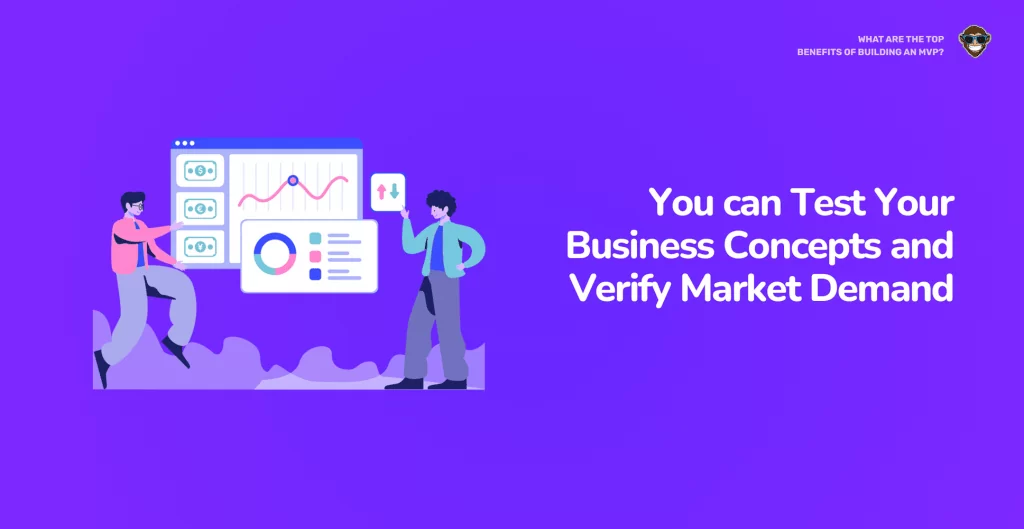
You can Test Your Business Concepts and Verify Market Demand
This benefit is one of the most relevant of building an MVP. Testing your concepts by releasing a lean app rather than a full-blown product gives you the power to verify that your mobile product resonates with your users. Your development team gathers all the feedback from these users and analyzes it to change your product’s direction according to their findings. If your idea doesn’t resonate or adds value, you can mold it and adapt better to market demand. This way, you don’t have to commit to a static concept and risk all your assets on an untested idea.
Building an MVP also allows your development team to tailor your app’s features and functionality to suit your users better. Skipping an MVP and going with a feature-heavy product will make it harder to update and change. Developers will likely need to rebuild your entire product to adapt to your market’s needs. Doing this will not only cost you too much money, but you’ll waste time releasing your product and give your competitors an unwanted advantage over you.
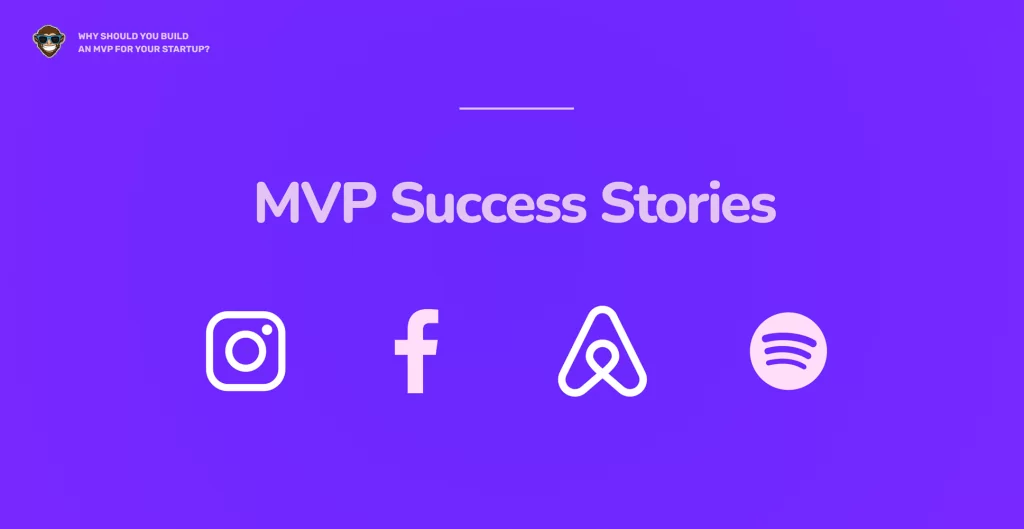
MVP Success Stories
Some of the biggest companies in the digital world began their journeys by launching an MVP. They grew by gradually refining it and adding features upon receiving honest user feedback. This approach allowed them to remain financially sound and grow slowly into the giants that they are today.
Initially, Instagram’s MVP was centered on photo sharing and filters only. Users took pictures, applied one of the few available filters, and finally added them to an album on their device. At that time, the market was flooded with photo editing apps, making it hard to stand out. However, thanks to the data gathered from that initial MVP, they slowly and gradually started adding the features that gave them their unique value proposition. They started adding video options and allowed users to edit, upload, and share their pictures using geolocation, hashtags, countless filters, and even broadcasting live. Thanks to the insights gathered during their MVP stage, they became one of the leading social networks.
The most popular social network started as an internal college connection network called Thefacebook. Mark Zuckerberg’s idea for Facebook’s MVP enabled connections between students from the same class or college by letting them post messages to boards and send friend requests. The idea kicked in full force, and soon other colleges were using Facebook. The gathered data from those users allowed Facebook to gradually start adding the features that eventually lead to its worldwide success.
Airbnb
AirBed&Breakfast started as a simple MVP to provide low-cost accommodation to the people who were visiting San Francisco for a design conference. Airbnb’s founders realized that hotels in San Francisco were sky-high expensive, identified this as a problem, and offered a solution. They launched a simple website with a few photos of their apartment and immediately got three guests. Today, the startup has morphed into a hospitality giant with millions of users worldwide and countless accommodation options to serve every need and budget.
Spotify
Spotify’s founders identified a problem when music lovers wanted to stream music online or on their devices. They started by launching an MVP, Spotify AB, that helped music lovers stream songs online. Their beta testers were influential music bloggers from Sweden who ended up loving the product, gave feedback, and spread the word about Spotify. Gradually, they added more features like song sharing and playlist creation and expanded their market to become the success they are today.

Final Word
For all business owners, especially startup owners, building an MVP is a tool that can leverage online presence, promote user engagement, and gain market presence without risking too much. Often, organizations wrongly assume that their product will fulfill a need and solve a problem without realizing the risks said assumption brings. The truth is, you just don’t know. That’s why the MVP is such an excellent tool to enter a new market. It will allow your organization to test the market demand for your product before risking your capital. Moreover, with an MVP, you can discover new needs and new problems, which can help you focus your value proposition better and invest your hard-earned resources more efficiently. Ultimately, an MVP is the best way to predict the future of your app, and who wouldn’t want that?
At Foonkey Monkey, we have developed countless MVPs for several different projects, websites, and apps. If you’re still unsure of how an MVP can leverage your app’s success, don’t hesitate to get in touch. We’ll guide you through the process and help you release your MVP to the market in no time! Let’s talk!
